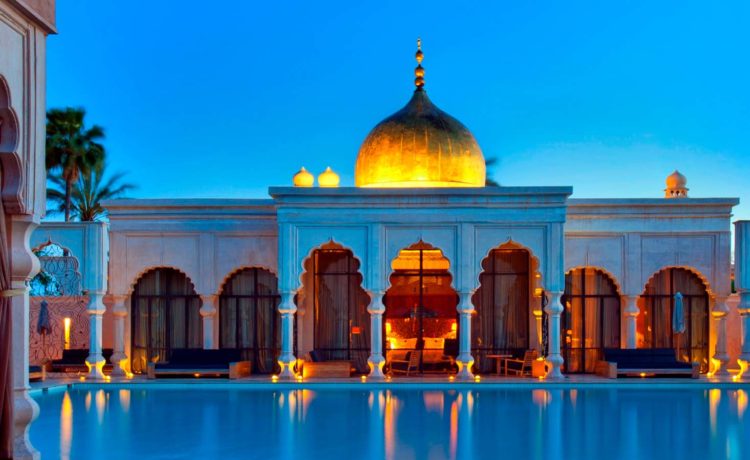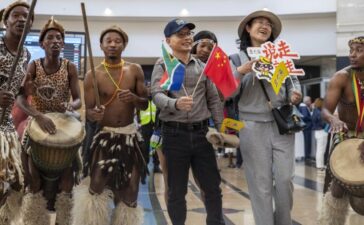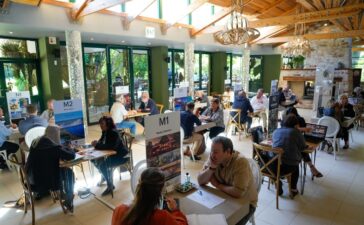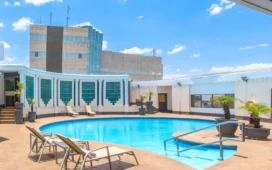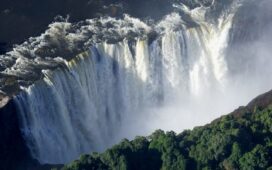Recently updated on March 27th, 2024 at 02:18 am
Often overlooked by tourists, Rabat, the pleasant capital city of the Kingdom of Morocco, is second-largest to better-known Casablanca. Although just as cosmopolitan, it lacks the frantic pace and grimy feel of its economic big brother. Relaxed, well-kept and very European, Rabat’s elegant tree-lined boulevards and imposing administrative buildings exude an unhurried, diplomatic and hassle-free charm that many travellers grow to like.
Rabat is located on the Atlantic Ocean at the mouth of the historic river Bou Regreg. Known as the ‘royal city’, it is ideal for travellers who appreciate culture and history.
Getting there and away
Rabat has a small airport, Rabat-Sale Airport, just outside of town, serviced by Royal Air Maroc and Air France. However, most visitors will arrive by train from Casablanca (where the main international airport is). Frequent high-speed trains from Casablanca take less than an hour to reach Rabat. Long-distance buses are also readily available from every major town in Morocco. Rabat’s airport is located about 8km east-northeast of the city and a train ticket from the airport to Rabat costs about 80 Moroccan Dirham (US $9.50).
Getting around
Located 70km north of Casablanca, and only 50 minutes by rapid train, Rabat is as easy to navigate as it is to get to as most roads lead off the central boulevard. Blue ‘petite taxis’ are cheap and plentiful between the major attractions, or perhaps don your walking shoes and explore this pedestrian-friendly city on foot. Local taxis are available, but drivers do not speak much English, so it is best to know the French name of the place you want to go to beforehand. For something different, try getting to Sale, Rabat’s sister town across the river, by rowboat.
Where to stay
At the Golden Tulip Farah Rabat Hotel, the exceptional setting marries sophistication with comfort. It is an ideal location for business and pleasure to meet, providing a number of restaurants, bars and meeting rooms, as well as swimming pool and health and fitness clubs.
The Hotel Sofitel Rabat Jardin des Roses occupies a majestic position in the heart of Rabat, close to the Royal Palace and Mausoleum of Mohammed V. This 5-star luxury hotel is set amongst a 17-acre garden; a regal palace with an international reputation, it is an oasis of relaxation and pleasure.
Eating out
Restaurant Dinarjat is stylish, elegant and a favourite of the Medina crowd. It’s set in a superb 17th-century Andalusian-style house in the heart of the Medina. Le Petit Beur Dar Tajine is a modest little place renowned for its excellent Moroccan food, including succulent tajines and heavenly couscous. This restaurant livens up at night when the waiters double as musicians.
Le Grand Comptoir Rabat oozes the charms of an old-world Parisienne brasserie. This suave restaurant and lounge bar woos customers with its chic surroundings and classic French menu. Candelabras, giant palms and contemporary art adorn the grand salon while a pianist tinkles in the background.
History and culture
As with many Moroccan cities, Rabat is divided into the Medina (old-walled city) and the Ville Nouvelle (new city, built by the French). Rabat is where the government is located, and is also the residence for the King of Morocco. The city has a rich history but is a fairly new capital. The French gave it this status in 1912 and it remained the capital as per the King’s wishes after independence in 1956.
Moroccans express their culture through the arts; from making carpets, jewellery and textile fabrics to carving, painting and music. Music is deeply ingrained in the culture, and everywhere you go you’ll find music groups playing at marketplaces or in cafés in the evening, especially during Ramadan.
In the city
The Archaeological Museum in Rabat is a must-see. Built in 1932, the original museum has been greatly enlarged in order to provide adequate housing for the ever-expanding plethora of archaeological discoveries that have been found in Morocco. The building itself has been the site of the National Museum Collection since 1986 and has a lot to offer the average visitor.
The Chellah Gardens are beautifully landscaped with hundreds of flowers coming into bloom during springtime, which results in the most amazing variety of scents. The flowers come in every colour imaginable and produce an incredible display for visitors to enjoy.
Outdoor activities
One of the reasons that Rabat is such a popular destination in Morocco is its coastal location. Rabat has a pristine beach where you can spend a relaxing day soaking up the sun or surfing.
If you are an outdoors enthusiast and would like to explore Morocco’s natural scenery, the Lac Sidi Boughaba Parc is just 20km north of Rabat’s city centre. Lac Sidi Boughaba Parc is a beautiful biological reserve home to a wealth of fauna and flora. At the reserve you can enjoy hiking while exploring the wildlife, picnicking and even fishing at the lake.
Nightlife
If you feel the urge to dance, 5th Avenue is an American-themed bar styled on a Moroccan impression of New York. It plays a spectacular range of music and features everything from hip hop to techno to Middle Eastern beats.
XVIème is an upmarket, stylish and urbane club in Agdal occupied by Rabat’s finest socialites, but is rather on the expensive side. If you are in the mood for a sophisticated night out on the town, put on your fanciest clothes and visit an ATM before joining the queue at the door.
Shopping
One of the must-see attractions is the Medina (or souk) of Rabat, which is in the older part of the city and can be entered through Souika Street. In the medina of Rabat there are plenty of traditional shops and cafes to visit and explore. Rabat’s medina is a pleasure to walk around in as it is relatively hassle-free in comparison to other larger medinas in Morocco. There are lots of craft shops that contain a variety of items, like the well-known Rabat and Berber carpets and embroidered fabrics.
Moroccan’s are by nature very friendly and, if offered, be sure to partake in some mint tea, which is refreshing after a hard bargain.
Language
Arabic and French are the most common languages you’ll hear on the streets of Rabat. Standard Arabic is the official language of Morocco. Though it is somewhat different from most other types of Arabic, most Moroccans can understand conventional Arabic.
Though not seen as an indigenous language in Morocco, at least half of the population is capable of speaking French. This is due to the strong French influence during the period of 1912 to 1956, which has also left a large amount of French architecture in parts of Morocco.

